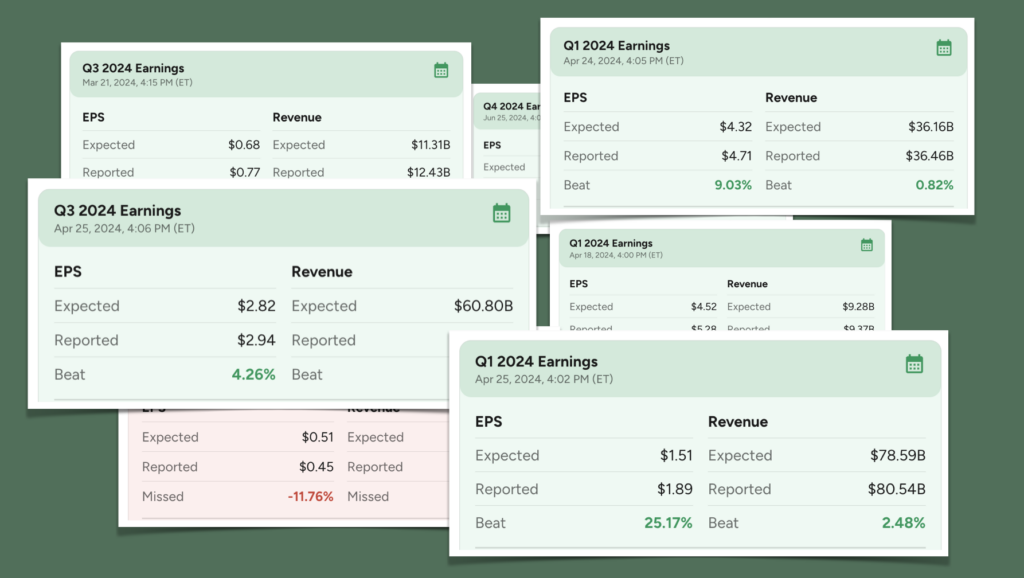For investors, understanding earnings estimates and actuals is crucial for making informed decisions. These figures can significantly impact stock prices and investment strategies. This article will explain the differences between earnings estimates and actuals, how they are calculated, and their implications for investors.
What are Earnings Estimates?
Earnings estimates are predictions made by financial analysts about a company’s future earnings. These estimates are usually given as earnings per share (EPS) and are based on various factors, including historical performance, market conditions, and company guidance.
Key Points:
- Source: Estimates are provided by professional analysts who follow the company closely.
- Frequency: They are updated regularly, especially before earnings announcements.
- Purpose: Estimates help investors set expectations for a company’s financial performance.
Here is an example of Tesla Earnings Estimates:

What are Earnings Actuals?
Earnings actuals are the real earnings figures reported by a company at the end of a quarter. These figures are part of the company’s earnings report and provide a snapshot of its financial health over the reporting period.
Key Points:
- Source: Actuals are reported by the company itself and are audited to ensure accuracy.
- Content: They include revenue, net income, and EPS, along with other financial metrics.
- Frequency: Reported quarterly, typically in January, April, July, and October.
Comparing Earnings Estimates and Actuals
The comparison between earnings estimates and actuals is critical for investors because it can drive significant stock price movements. Here’s how:
1. Meeting Expectations:
- When a company’s actual earnings match analysts’ estimates, it is considered to have met expectations. This usually results in stable stock prices as the market has already priced in these expectations.
2. Beating Expectations:
- If actual earnings exceed estimates, the company is said to have “beaten expectations.” This can lead to a surge in stock prices as investors view the company’s performance positively.
3. Missing Expectations:
- Conversely, if actual earnings fall short of estimates, the company has “missed expectations.” This often results in a decline in stock prices, as the market reassesses the company’s valuation and future prospects.
Why Do Estimates and Actuals Differ?
Several factors can cause discrepancies between earnings estimates and actuals:
Market Conditions: Unexpected changes in the market, such as economic downturns or industry-specific issues, can impact a company’s performance.
Company-Specific Events: Factors like new product launches, mergers and acquisitions, or regulatory changes can lead to deviations from estimates.
Analyst Accuracy: Analysts rely on available data and their own judgment. Variations in their assumptions and models can lead to differences in estimates.
Impact on Investment Strategies
Understanding the relationship between earnings estimates and actuals can help investors refine their strategies:
Pre-Earnings Positioning: Investors often adjust their positions before earnings announcements based on estimates. Anticipating beats or misses can provide opportunities for strategic buys or sells.
Post-Earnings Analysis: After earnings are announced, comparing actuals to estimates helps investors understand the company’s performance and adjust their portfolios accordingly.
Long-Term Implications: Consistent beats or misses can indicate broader trends in a company’s performance, influencing long-term investment decisions.
Earnings estimates and actuals are essential tools for investors. By understanding their differences and implications, investors can better navigate the financial markets, make informed decisions, and optimize their investment strategies. Staying informed about both estimates and actuals, and analyzing the reasons behind any discrepancies, will provide a deeper insight into a company’s financial health and future prospects.



